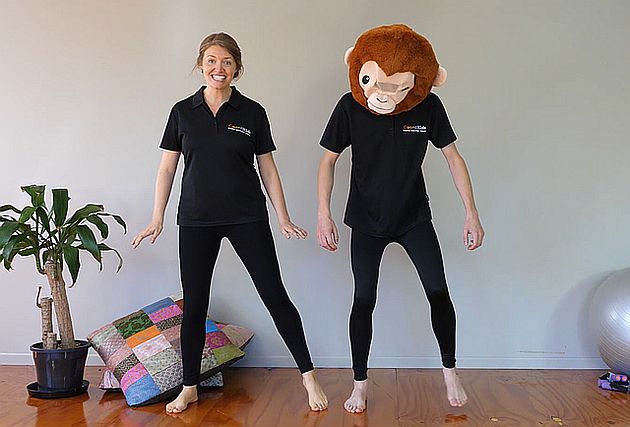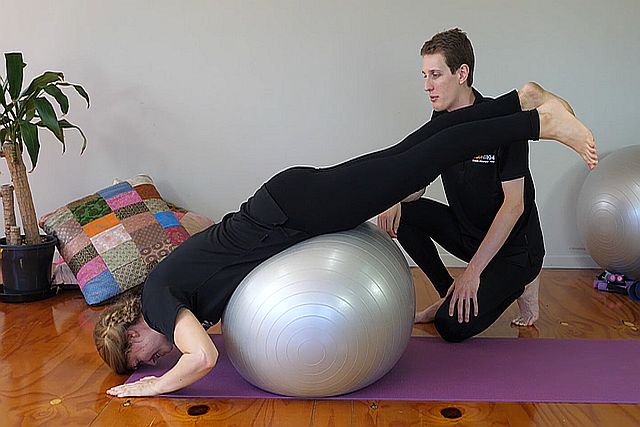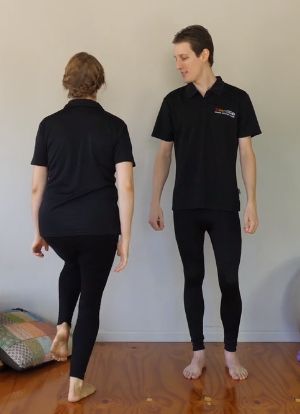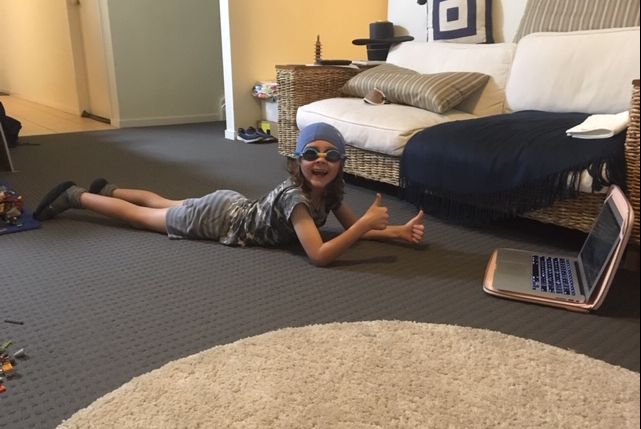General Information
Midbrain Development Exercises for Boosting Motor Skills Development
In this article we’re focusing on at-home (or at-the-park!) midbrain development exercises that you can do with your child to boost their sensory motor skills development and emotional regulation.
Homeschooling is quickly becoming a smart option for parents who are dissatisfied with what traditional schooling offers.
Traditional school’s inability to provide the type of learning environment conducive to their child who has learning disabilities, ADHD, sensory processing disorder, or Autism Spectrum Disorder leaves parents disheartened.
When parents grow weary of IEPs or 504 Plans that fail, and they’re tired of seeing their child fail where others thrive, homeschooling can be a fantastic change of pace.
If you’re one such parent, we salute you! Plus, we hope you’ll take advantage of the opportunity to incorporate a variety of therapeutic tools in your homeschool planner.
These tools will help you to optimize your child’s homeschool education. We’re talking about physical activities and a brain break that are designed to encourage optimal motor skills development and self-regulation skills. These are two areas that often go hand-in-hand with learning disabilities.
We know you will enjoy these midbrain development exercises with your child. How do we know? Because they are tremendous fun as well as tremendously valuable!
What’s the Connection?
Until about 20 years ago, it was thought that there was not much of a connection between motor development and cognitive development. The development of movement and motor skills takes place very early in humans.
Furthermore, it was initially thought that it had a finite ending point. So, beyond this perceived development point, children could no longer expect to improve sensory skills development.
Cognitive development, on the other hand, is practically a life-long process. The two functions weren’t thought to affect one another.
The past 20 years have shown an explosion in research that suggests otherwise. It is now understood that there are many links in development between cognition and movement.
A primary example is that the development of the midbrain directly affects the later motor skills development in children. When a child has a problem with one, it’s often found that there is/was a problem with the other.
“Motor coordination problems are common in children with Attention Deficit Hyperactivity Disorder (ADHD), although the cognitive deficits associated with this disorder have received far more attention.
At least half of all ADHD children have poor motor coordination and fit the diagnosis for developmental coordination disorder.” (Diamond, 2000)
So, for our home-schooling friends worldwide, I’ve put together a simplified overview of important connections you need to know. This is a guide to connections made between the development of the midbrain and motor skills in early childhood development.
We’re also including a list of midbrain development exercises to add to your homeschool planner. These are midbrain development exercises that you can do with your children as part of their homeschool curriculum.
Carefully designed midbrain development exercises make sure your children are hitting the optimal fine motor skills and cognitive development stages.
How the Proper Development of the Midbrain Affects Later Motor Skills
The cerebellum is a small part of the back of the brain, often referred to as the midbrain. In general, the cerebellum does a large portion of information processing.
What is motor skills is often asked by our parents.This is where the integration and regulation of information takes place. Additionally, the cerebellum is responsible for coordinating muscle control. It controls motor output, modulating functions through the limbic system.
Researchers have demonstrated that the cerebellum is involved in each of the following functions:
Coordination
The cerebellum acts as a timing center. It coordinates the efforts of multiple muscle groups at the same time to ensure the body moves smoothly.
The difference between how a toddler learns to walk primarily in jerking motions and an adult with a smooth gait has a lot to do with the development of the cerebellum.
Motor skills
Complex movement coordination’s, such as those that come together while playing a piano, playing sport, or taking notes from a blackboard, are coordinated and fine-tuned by the cerebellum.
Balance
Special sensors detect any slight shifts in balance during movement. This alerts the brain and body to adjust and react in a coordinated effort to maintain balance.
Eye movement
Being able to shift eye focus from a near point to a distant point, as well as being able to track movement smoothly, are examples of how the cerebellum is involved with vision and eye movements.
The Midbrain Affects Emotional Regulation, Too!
Now, if you think way back to your biology classes, you might recall learning about the limbic system. For those of us who have experienced a lifetime since biology classes, though, here’s a quick recap.
The limbic system is where emotions are registered and regulated in the brain. It includes the thalamus, hypothalamus, frontal lobe, olfactory bulb, and more. So what does the limbic system have to do with the cerebellum and motor skills development? A lot, as it turns out.
Studies from the past decade have demonstrated that the limbic system and the cerebellum influence each other quite a bit. That means that there are connections between a child’s development of motor skills functions and how he/she regulates their emotions.
“Considering the extensive networks between vestibular and limbic system, it is likely that vestibular stimulation techniques may be useful in influencing emotions.” (Rajagopalan)
So, if you consider the fact that many children who deal with motor skills issues also have difficulty focusing and regulating their emotions normally, it’s worth considering the potential opportunity to strengthen both mechanisms in one swoop – by focusing on midbrain development exercises.
Midbrain Development Exercises to Motor Skills Functions & Emotional Regulation
Well then! Whether you’re still on board after learning more than you expected today about the brain, or if you skimmed the dense material above and jumped ahead to the conclusions, here we are!
Shall we explore just what types of activities boost midbrain development, motor skills functions and emotional regulation? Be sure to print these out to keep with your homeschool planner!
Homeschool Planner Printables for Boosting Motor Skills Development with Midbrain Development Exercises
Exercise 1
Walking on a balance beam
Exercise 2
Standing on one leg
Exercise 3
Shifting the weight slowly from one foot to the other, changing directions and speed throughout.

Exercise 4
Standing on a balance board while reciting the alphabet
Exercise 5
Inverting the head while rolling on a yoga ball.

Exercise 6
Moving the arm and leg on the same side of the body, such as slapping on the left knee with the left hand and then with the right hand on the right knee.
In the young child this is difficult – to get the timing right, in the older child it should be a breeze. The older child (5 Years and older) can do crossing over, e.g. slap on the left knee with the right hand.
Exercise 7
Marching on the spot encourages, preferably on a beat, encourages timing, rhythm, sequencing and helps with emotional regulation.

Exercise 8
Improve core muscle strength and involve both sides of the body in movement, such as our Super Swimmer exercise. The Super Swimmer exercises is to: lie on tummy, lift head then lift left arm and right leg, continue on a beat.
This boy enjoyed it so much that he dressed up as a swimmer, to do the exercise with Paul on his CoordiKids video.

Midbrain Development Exercises from Pediatric Occupational Therapists
My team of occupational therapists have developed a series of in-home, follow-along videos that target neuroplasticity, called CoordiKids. The exercises in CoordiKids lead children through:
- balance,
- spatial balance,
- motor activities,
- vestibular activities, and
- fine motor skills,
all of which improve cerebellar functioning.
So, if you find it challenging to come up with your own midbrain development exercises, just use ours! As your child’s neural networks in his/her brain practice organizing sensory information, they become more and more efficient.
If your child is 3-5 years old, check out Coordikids Preschool Course. For older children, CoordiKids Home Course would be right for you. Each series contains a year’s worth of videos, each only 15 minutes!
Children simply follow along, with no preparation needed in most cases. If you expect problems with your child’s development, use CoordiKids Home Course to ensure optimal development of sensory motor skills (function of the cerebellum).
Coordikids are the perfect way to address motor skills development. They also serve to ensure kids develop these functions before advanced learning and to provide movement breaks for optimal concentration when doing tasks at home.
We offer special packages for home-schooling parents, so be sure to Contact Us for pricing information!
We hope we’ve given you plenty of information to boost your homeschool planner program. The topics of:
- knowing how the brain works,
- which parts of the brain most affect your own child’s daily successes, and
- which midbrain development exercises you can incorporate in order to encourage optimal development
will surely add to the effectiveness of your lessons!
You Might Also Like:
“How Do You Feel?” A Curriculum for Teaching Emotional Regulation
References:
“Understanding the links between vestibular and limbic systems regulating emotions.”, Archana Rajagopalan, K. V. Jinu, Kumar Sai Sailesh, Soumya Mishra, Udaya Kumar Reddy, and Joseph Kurien Mukkadan